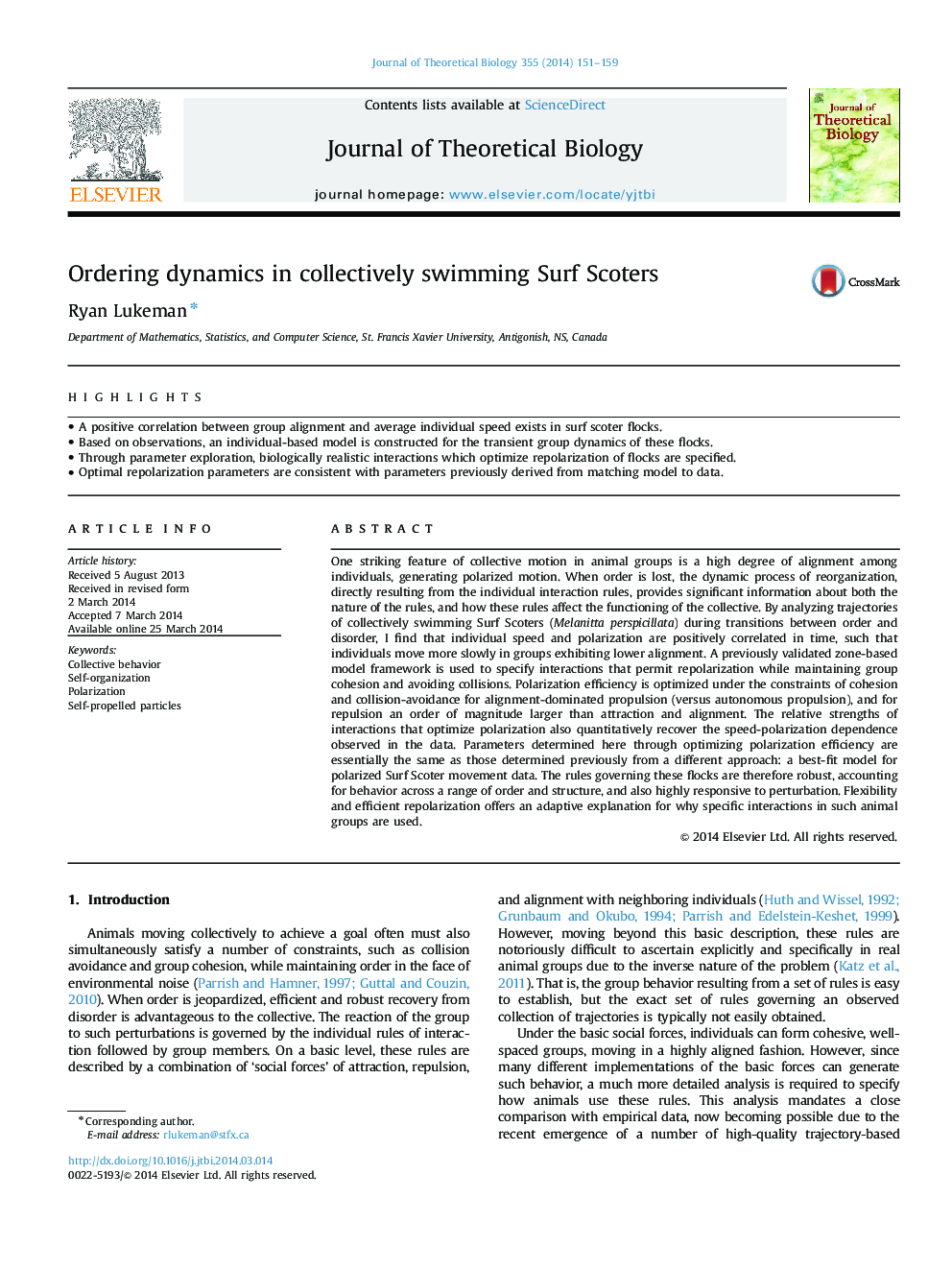| Article ID | Journal | Published Year | Pages | File Type |
|---|---|---|---|---|
| 6370497 | Journal of Theoretical Biology | 2014 | 9 Pages |
Abstract
One striking feature of collective motion in animal groups is a high degree of alignment among individuals, generating polarized motion. When order is lost, the dynamic process of reorganization, directly resulting from the individual interaction rules, provides significant information about both the nature of the rules, and how these rules affect the functioning of the collective. By analyzing trajectories of collectively swimming Surf Scoters (Melanitta perspicillata) during transitions between order and disorder, I find that individual speed and polarization are positively correlated in time, such that individuals move more slowly in groups exhibiting lower alignment. A previously validated zone-based model framework is used to specify interactions that permit repolarization while maintaining group cohesion and avoiding collisions. Polarization efficiency is optimized under the constraints of cohesion and collision-avoidance for alignment-dominated propulsion (versus autonomous propulsion), and for repulsion an order of magnitude larger than attraction and alignment. The relative strengths of interactions that optimize polarization also quantitatively recover the speed-polarization dependence observed in the data. Parameters determined here through optimizing polarization efficiency are essentially the same as those determined previously from a different approach: a best-fit model for polarized Surf Scoter movement data. The rules governing these flocks are therefore robust, accounting for behavior across a range of order and structure, and also highly responsive to perturbation. Flexibility and efficient repolarization offers an adaptive explanation for why specific interactions in such animal groups are used.
Related Topics
Life Sciences
Agricultural and Biological Sciences
Agricultural and Biological Sciences (General)
Authors
Ryan Lukeman,
